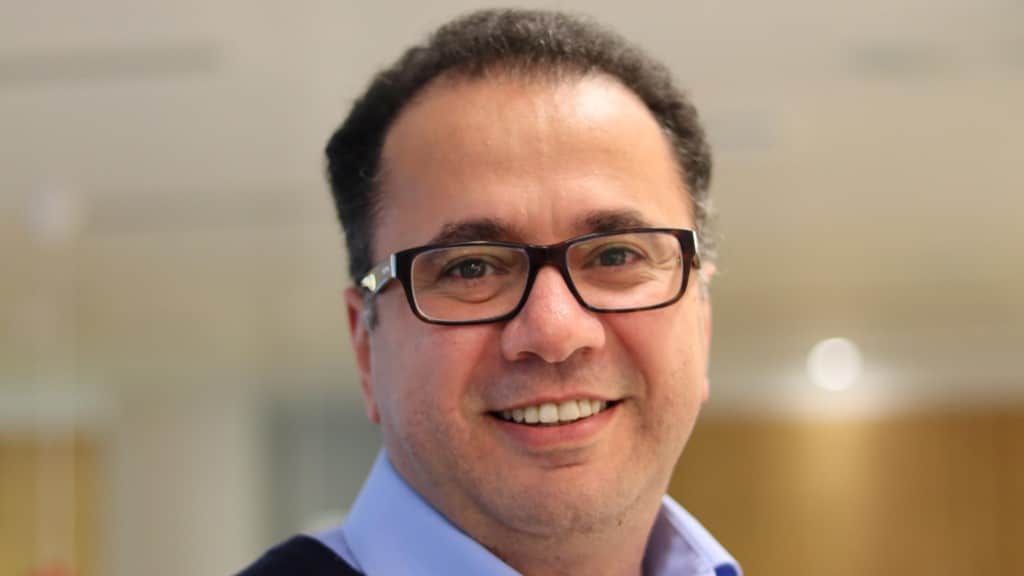The future of fire engineering
- September 29, 2023
- 8:00 am


Iain Hoey
Share this content
Ahmed Allam, Managing Director of CHPK Fire Engineering Limited, highlights the need for a more comprehensive and inclusive approach to fire engineering
What is one of the biggest challenges currently faced by the fire engineering industry?
One major challenge is the scarcity of fire engineers, stemming from the limited availability of university degrees in fire engineering – a problem not just in the UK but worldwide.
Additionally, the required level of competency to enter this profession is high.
Fire engineering is unique in that it interacts with many other engineering disciplines throughout the design process.
Whether it’s determining the resistivity a structure needs, or adapting to changes made by structural engineers, fire engineers play a vital role.
Moreover, this field often requires innovative solutions that don’t adhere to traditional standards or guidance, especially as architectural designs become more creative and unconventional.
Why is it critical for people to understand the big picture when it comes to fire engineering?
When developing a fire engineering solution, it’s not enough to simply adhere to current codes and standards, though they are vital.
These standards generally cover the vast majority of buildings, but when a building has unique characteristics, additional considerations must be taken into account.
The “big picture” involves not only the fire engineering itself but also how it interfaces with different engineering disciplines, and at the core of all of this is building safety.
Previously, before the Building Safety Act, fire engineers might have come into a project later, inheriting design solutions with restrictions that hindered the implementation of proper fire engineering standards.
Understanding the big picture is an essential, and sometimes neglected, aspect of the project.
If a fire engineer, client, and design team can appreciate the broader context, they can build more integrated solutions.
The big picture is about focusing on the total journey of an asset, recognising how decisions made early in the design phase can impact not only construction but also operation and maintenance costs.
It’s about minimising inherited risks in the design, considering potential higher risks that could affect constructability, and understanding the long-term implications for those who live in or use the asset.
The real importance lies in recognising the holistic impact that fire engineers, and engineers in general, have on the entire lifecycle of a structure, ensuring that considerations are made beyond just complying with standards.
It’s a perspective that demands attention to how all elements interrelate, capturing as many details as possible to create safer and more effective designs.
How does the changing role of the fire engineer impact the design of the building?
The role of fire engineering, especially in light of the Building Safety Acts following Grenfell, has become a central force in maintaining an asset throughout its lifecycle.
Imagine a scenario where the necessary groundwork isn’t done during design and construction, and the asset is handed over to the Responsible Person to operate.
Any deficiencies in the design could become evident during operation, leading to undesirable outcomes and potentially massive costs.
A flawed design that persists into the operational phase can be detrimental, leading to significant expenses over the building’s life.
The importance of competent fire engineering in creating sustainable solutions is paramount.
It’s not just about compliance with codes and regulations but also about building designs that support adaptability and efficiency throughout the structure’s lifecycle.
This changing role of fire engineers emphasises the need for an integrated approach to design that takes into account the entire journey of a building, from initial design to daily operation.
It’s about looking beyond immediate needs and planning for the future, recognising that the design decisions made today have long-term consequences.
Where do you see the discipline of fire engineering heading?
The future of fire engineering must be shaped by deep reflection and a collective sense of responsibility.
As I progress in my career, I find myself more conscious of the need for my solutions to be carefully checked and discussed.
The tragedy of Grenfell is a haunting reminder of how industry practices can lead to catastrophe, and we are all responsible in some way.
I believe that what we need to see is a more inclusive approach to leadership in the industry.
It’s not just about big firms pursuing their objectives through corporate social responsibility; we must engage small firms as well.
The focus must be broadened to serve the entire field, avoiding the narrow spectrum that may have contributed to issues like Grenfell.
The challenge lies in inclusivity.
We need to create mechanisms that allow all competent individuals to contribute, regardless of where they work or their organisational size.
This will make the roundtable bigger, ensuring that no important voices are missed, even if they are not part of a larger institution or firm.
The future of fire engineering must be a collective endeavour, embracing all parts of the industry, and recognising that everyone has something valuable to contribute.
It’s about fostering a culture where all insights are welcomed, not just those from the most prominent players.
This inclusive approach will not only make the industry stronger but also create a safer and more responsive environment for all.

